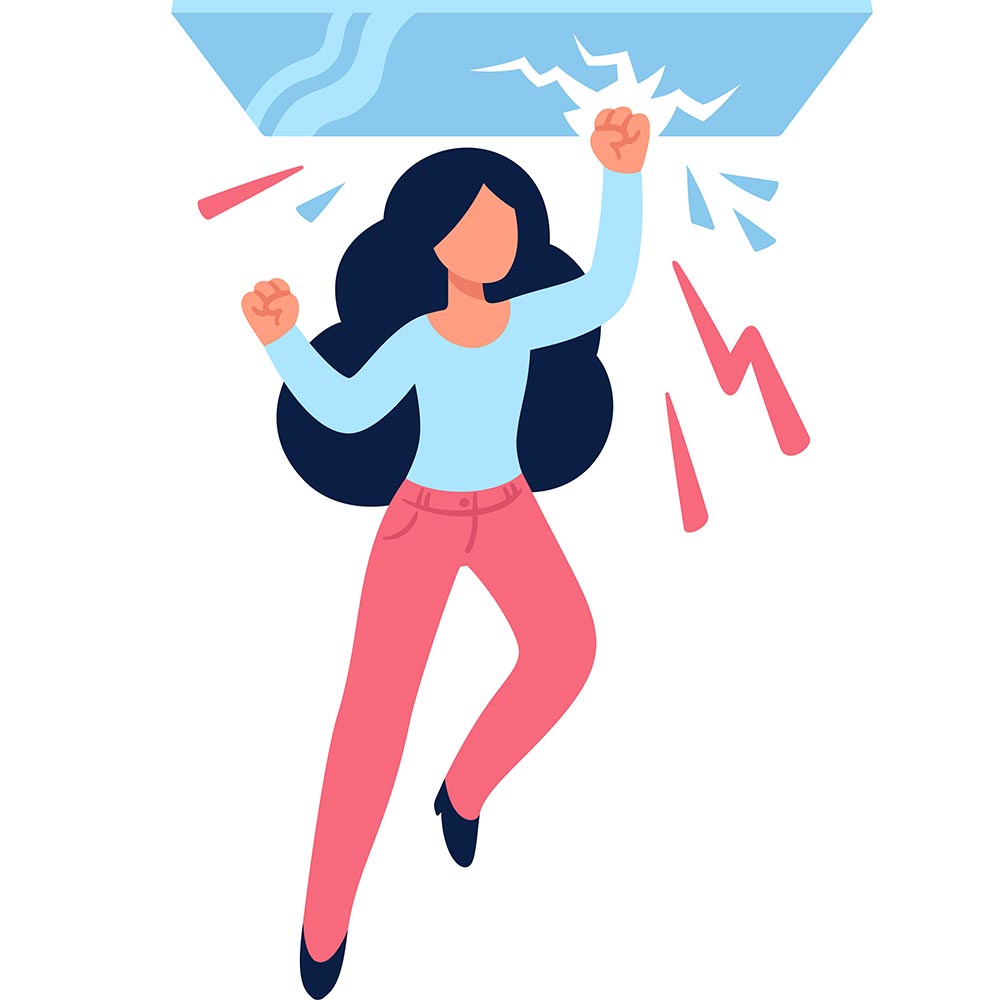Have you ever heard a woman comment negatively on another woman’s choice of being childfree? Does it make your blood boil when a woman makes another woman feel guilty for focussing on her career after having children? Does it leave you baffled when a woman goes on to say, ‘Oh, she was dressed like that, she was asking for it,’? Internalised misogyny pops its ugly head in innumerable ways.
You wonder, how on earth can another woman violate your autonomy, pull you down or reinforce the very stereotypes and gender roles that we’ve been fighting against. We are on the same side of the fence here, we should be supporting each other, and yet, you will find several women passing on the torch of patriarchal values to the next generation. Now before you put the blame squarely on the shoulders of “certain kinds of women”, you should know the real culprit here is living with patriarchy for generations, because of which most of us have internalised patriarchy without even realising it.
In ways big and small, it’s safe to say almost every woman has been subjected to internalised misogyny and sexism. And while it often makes me angry, the empath in me also understands that those women too are victims of years and years of social conditioning. The point is, that we as a society are still evolving and patriarchal values have clouded the heads of many. What is important here is that we open and continue dialogues on gender disparity so that there is more awareness, and women, who still face challenges on their journey of unlearning patriarchal values, evolve too.
What is internalised misogyny?
Internalised misogyny involves women holding stereotypical notions about other women and female dynamics. This challenges gender equality as women who indulge in internalised misogyny put themselves and all other women on a level lower than men. Mehezabin Dordi, Clinical Psychologist, Rehabilitation and Sports Medicine Department, Sir H.N. Reliance Foundation Hospital explains, “Internalised misogyny refers to the by-products of this societal view that cause women to shame, doubt, and undervalue themselves and others of their gender. The terms “internalised sexism” and “internalised misogyny” have been used relatively interchangeably. It is also seen that women enact internalised sexism-driven behaviours to preserve the system of sexism as a whole, albeit often in unconscious ways.”
Why is internalised misogyny still prevalent?
It’s 2022, why is a majority of our society still not just holding but also reinforcing sexist beliefs? Why are so many men and women still blind to gender equality? These questions are perplexing!
“Early childhood enculturation happens to be the most prevalent reason. Along with that, Television and cinema and now social media also aid in its prevalence,” Ms Dordi points out. She explained that the difference in the way male friendships and female friendships are shown also reinforce such stereotypical notions. Also, think about the choice of toys and clothing colours we still enforce. Using gendered language and linguistic sexism is another way of socially conditioning women to abide by the unfounded gender script we’ve been passing on to generations.
Dordi points out that women are always told things like ‘women can’t drive’, ‘that’s not what a good wife would do’, ‘a woman must not give her body away easily’, etc. “These keep echoing inside them, leaving them with self-doubt and an inferiority complex which further leads to internalizing the ideas of misogyny,” Dordi explains.
In fact, several studies point out that misogyny is intergenerational. It was beautifully represented in the movie Thappad, in which Taapsee Pannu’s character was given a list of dos and don’ts of being a good wife by her own mother, who later encouraged her to go back to her husband after he slapped her. She only wanted the best for her, but she didn’t realise what she was giving her was a big inheritance of internalised misogyny.

Signs of internalised misogyny
While many of us feel internalised misogyny often comes from women of the older generations, even those young enough to know how to make reels on Instagram tend to be the torch-bearers of patriarchal beliefs. And sometimes, without even realising it, you may end up doing something that contributes to the same.
How do we identify internalised misogyny? Ms Dordi lists down signs.
1. Thinking You’re ‘Not Like Other Girls’: Every girl is different, every individual is unique and there’s no doubt about it. But when you proudly say (or take it as a compliment when someone else does) that you are ‘not like other girls’, you are putting other women down and reinforcing gender stereotypes. Such behaviour reeks of internalised misogyny and you might want to change your thought process.
2. Victim Blaming: In cases of gender-based violence or sexual assault on women, if you almost instinctively end up blaming the victim’s clothing, attitude or actions, then you are being misogynistic. The onus has to be on the abuser and not the one getting abused.
3. Shaming women’s sexual choices: Shaming a woman’s sexual choices, clothing preferences and the number of relationships she must have had doesn’t always come from the male section of our society. So if someone judges you for your choices, that comes under the umbrella of internalised misogyny.
4. Body Shaming or Resenting Your Own Body: Body shaming other women or yourself for not sticking to the stereotypical and patriarchal notions of feminine beauty is a form of internalised misogyny.
5. Conforming to Gender Stereotypes: Many women not only conform to gender stereotypes themselves but also expect other women to do so. If you’re told to dress like a lady, women must not hit the gym, a woman is incomplete without a husband and/or a child, etc, it is all an indication of internalised misogyny.
Internalised misogyny at work
Shikha Mittal, Founder, Be.artsy and Be Your Own Shakti, has conducted several workshops for organisations on financial literacy, sexual harassment prevention, biases, diversity and inclusion. Mittal talks about internalised misogyny at workplaces, “More often than not, genders other than men are rewarded for choosing a second-class status at work in form of employee benefits. This promotes the idea of roles at work to be appropriate for certain people and not appropriate for others, impacting the people and their careers even when many people are capable of doing well and outperforming from all genders.”
Mittal points out how to identify internalised misogyny at work, “Choosing a lower status, accepting the status quo, not speaking up on unfair practices, etc.”
In fact, internalised misogyny also often buttresses the sexual objectification of women at workplaces. In every other office, you will find someone commenting negatively on the appreciation of a woman at work. If a man gets promoted, he worked hard for it, they say. If a woman gets promoted or appreciated, she is using her charms to seduce the manager, many speculate. A woman who dresses up in not-so-modest clothing is being promiscuous at work—that’s another assumption people make. Preconceived notions and prejudices against women are also held by other women.

How does it affect women’s financial independence and literacy?
I have a cousin who is quite talented and can be making much more money than she should be, right now. Unfortunately, she grew up being told time and again that the only way she can achieve financial security is by marrying a man. Unfortunately, many families, including mothers, focus on teaching their daughters to provide for others in the family on the caregiving front instead of ways of wealth creation. “Women don't need pink products. They need investment, savings, insurance, and tax literacy so that they can make wise decisions and be financially healthy without being fooled by agents who are selling inappropriate products,” Mittal explains.
“Workplaces should add financial literacy, bias training, prevention, and redressal mechanism for any kind of harassment to deal with key issues to overcome at least the immediate evils present at the workplace,” Mittal concludes.
Battling internalised misogyny
“The first and the foremost thing here is clearly defining the problem. Many teens and young people don’t know the range of behaviours that constitute misogyny and what internalised misogyny looks like. It is also important to step in and intervene when you see it happening to you or someone around you. The most common response for many is to freeze but intervening is necessary to encourage behaviour change,” Dordi explains.
“Open communication within the family plays a critical role. It is also important to be vary of media and culture. I think education, identification and continued awareness are most crucial. It is only through conversations, conscious unlearning and building strong female solidarities that we will be able to see through the internalised misogyny and sexism, despite us being on the receiving end of it,” Dordi concludes.
Also Read: ‘My Partner Allows Me To…’: Everything Wrong With Sentences That Begin Like That